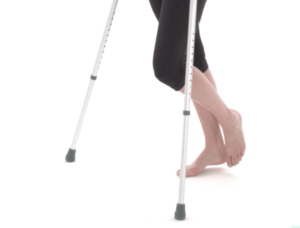- ABOUT:
Stress fractures are a small break in the bone that develops from overuse and/or inadequate recovery time. As the bone is overloaded, it will first develop a stress reaction where the structure inside the bone starts to change. If unrecognised the bone will weaken further and a stress fracture will occur. They are common in athletes and are far more likely to occur in the weight-bearing lower limb.

- SYMPTOMS:
Stress fractures are a progressive injury, early signs may be a dull ache in the area of the fracture. Often this is deep and is brought on by or worsens with activity.
Early on the pain will settle with rest following sport. However, as the stress fracture develops the pain often becomes sharp, very localised & easy to pin-point, and may remain long after you have finished your sport or activity, including through the night. A stress fracture often is accompanied by local swelling at the site of the injury.
- DIFFERENTIAL DIAGNOSIS:
The differential diagnosis will vary depending on the location of the symptoms; however, it commonly includes tendinopathy, particularly at the site where the tendon inserts into the bone. Additionally, compartment syndrome and nerve or artery entrapment should be ruled out.
- CAUSES:
A stress fracture is an injury that occurs when the bone is overloaded. This commonly occurs with a sudden increase in activity or training levels. Alternatively, it can develop when we start a new activity or exercise programme, with the bones struggling to adjust to the different loading pattern.
People with conditions that weaken bones, including osteoporosis are more at risk of developing a stress fracture.
- ANATOMY AND BIOMECHANICS:
The foot is our point of contact with the ground and as such, has to absorb our body weight when we are standing or running. The 26 bones of the foot are arranged in a manner that helps it to tolerate this repetitive loading, in particular, it utilises a strong arch to help disperse the load. However, if the load is too high or the duration is too long a stress fracture can develop.
In the foot, these most commonly occur at the metatarsals (esp 2nd & 3rd), the heel and the navicular.
- TREATMENT:
The primary treatment in addressing a stress fracture in the foot is to reduce the load going through the lower limb. This may vary from stopping sport or activity to using a CAM or moonboot or complete rest by using crutches and not weight-bearing through the affected foot.
Following a period of rest, an orthotic will be used in conjunction with retraining muscles of the foot and ankle to help manage the load going through the affected site.
The majority of If rest and rehabilitation is unsuccessful a surgical opinion should be sought
- RETURN TO FUNCTION / SPORT:
The return to sport is often slow, with your physiotherapist outlining a graded return to training. We must introduce load slowly and monitor the foot closely to make sure no symptoms return.
Commonly patients will be advised to cross-train, often in a non weight-bearing activity to help them maintain fitness without loading the foot.
The technique can play a big role in reducing unwanted forces in the foot. By teaching the correct technique for your desired sport we make movement more efficient and decrease the likelihood of injury.
- 5 TIPS FOR MANAGEMENT
- Avoid increasing your training load too quickly – slow and steady wins the race!
- Try and learn the correct technique or biomechanics for your sport or activity by joining a squad or getting some coaching.
- Ensure you have the correct equipment for your sport or activity, especially good fitting and supportive shoes for your feet.
- Consider cross training with a non-weightbearing activity (especially if your sport or activity involves repetitive impact or landing). It’s a great way to train your cardiovascular fitness and give the joints a little break
- If you notice symptoms that come on with activity and go away with rest, see a physiotherapist for assessment, the earlier we identify a stress fracture the less likely it is to develop and the quicker you’ll be back to your best.
